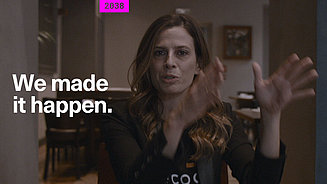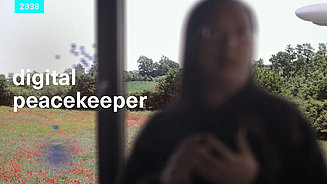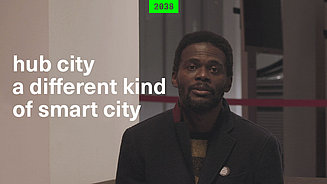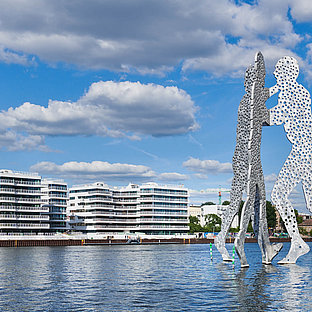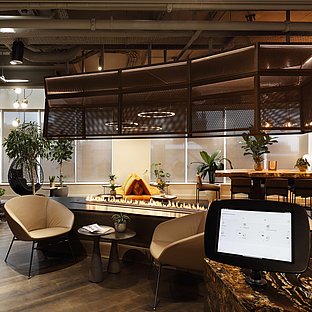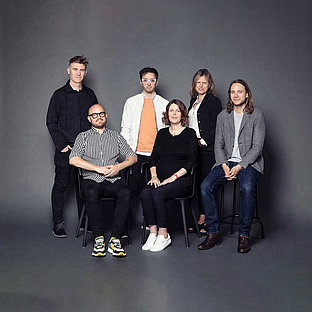Team 2038: Not utopian, but rather reconciliatory in retrospective
8 min readWhat is it all about?
2038 tells the story of a past which we still call the future today, although it is not a very distant one. The ‘last 18 years’ are recorded optimistically and in retrospect, along the following lines: “In spite of, or even thanks to the great crises of the 2020s and the 2030s, a rethink took place which just barely saved us”. This was achieved by worldwide participation on the part of all members of society, in particular by architects and planners, who were able to implement the necessary changes with comprehensive and interdisciplinary approaches. A new era of ‘neo-serenity’ has begun – exemplified by experts from politics, the arts, economics, ecology, technology and architecture, who have provided answers rather than raising questions.
We have all experienced a situation when a crisis of some kind or other pulls the rug out from under our feet. But many people have also known moments when we look back some time after hitting a low, still inwardly shuddering at the memory, but glad to admit one thing: “Phew, that was quite something back then, but fortunately everything took a turn for the better. We had a narrow escape. It was just in time.” But how can the curators be so optimistic to assume that something good may come out of today’s political low, the disastrous climate crisis and unjust social developments? “We always like to work with utopian ideas. When you imagine a positive future, you can more easily derive strategies for the present from it, which will then help us to achieve a desirable future”, said Helene von Schwichow, part of the 2038 team when the concept was presented in Berlin in February 2020.
Nothing here is without a meaning. ExRotaprint
The concept presentation took place at a very carefully chosen location. Since its foundation in 2007, ExRotaprint has been a model for a type of urban development that rejects profit from real estate ownership and creates an open, heterogeneous location for all social groups. ExRotaprint advocates a social mixture to promote new impulses and mutual acceptance in a precarious neighbourhood – for and with the people who live there. Perhaps this place is already an initial answer which 2038 reveals to us. Originally, Rotaprint was a German printing press manufacturer. Due to new electronic developments which replaced small offset printing, the company’s bankruptcy in 1989 could not be averted.
The source of this optimism is interdisciplinary and international. 2038 is an international team from the areas of architecture, art, literature, ecology, economics, politics and engineering. Arno Brandlhuber, Olaf Grawert, Nikolaus Hirsch and Christopher Roth initiated it specially for this purpose.
The heterogeneous make-up of this team, currently consisting of more than 100 people and institutions, was tangible at ExRotaprint. Unpretentious, friendly, broad-minded and open for discussion, people explained posithings, made contradictions, added comments and listened. This all took place without barriers between the team and the audience, without fear of contact between the various disciplines, without any claim to perfection and without excluding alternatives to what was said; yet it was energetic, convincing and calm.
Film as the main medium: endless moving images
There will be no texts, no pictures, no built-to scale models and no installations inside the German pavilion. Directly opposite the entrance, a large film projection will be shown. This main film with three different architects and their correspondingly different stories is intended to draw visitors into the pavilion, introduce them to the topic and fascinate them. The 2038 team is not perturbed by the fact that the average attention span for such films is normally less than 2 minutes. They make big promises that are full of courage and optimism.
30,000 magazines worldwide: free of charge in lieu of a catalog
The official German pavilion publication will be released in collaboration with Arts of the Working Class, an international street journal for art and society, poverty and wealth, which was founded two years ago in Berlin. Arts of the Working Class appears every two months and contains multilingual contributions written by artists and intellectuals from various disciplines and different countries. Sold on the streets, it contributes to the diversity of opinions in an open society and re-defines the territory of the arts, whose habitat is architecture. The street vendors are allowed to keep the full sales price of €2.50.
What is special about this 12th issue is that all the articles are dated with the year 2038 and, as part of the retrospective, this issue is being billed as the 120th issue. In retrospect and looking further ahead, they will tell stories from different angles about why everything turned out well in the end. And yes, this journal will be printed on newspaper and hand-distributed in streets all over the world. The team is certain that print is not going to die out.
Design and upcycling will become inseparable and, inevitably, one
The German pavilion is being designed and equipped in collaboration with Rebiennale, a platform established by a network of Venetian citizens, students, architects, artists and political activists. Since its conception, the practical activities of the group have been focussed on the enormous quantities of waste generated by the Biennale exhibitions with the objective of re-using waste materials for a joint urban redevelopment project. Its aim is to exchange methods, capabilities and know-how in the areas of do-it-yourself building and recycling. At the end of the Biennale of Art 2019, the 2038 team joined the Rebiennale team in collecting materials, furniture and installations from the pavilions and used these objects as the basis for planning the exhibition concept. As a result, some fragments of the Korean pavilion will be found next to benches borrowed from the city council.
Content for the general public?
Admittedly, looking forward to the German contribution with less scepticism and more optimism will require a great deal of imagination. The issue is a serious one, the need for reflection is great, the content is visionary, the presentation is fictitious… How can it reach those who are not in Venice, will not face up to it nor give it any thought? Olaf Grawert, a member of the 2038 team, says: “Well, we’ll inspire those we can reach. It is undeniable that our ways of thinking and our actions must undergo a radical change! The issue is complex and demanding, and we cannot force anyone to face it. We can reduce the complexity, but we cannot make it disappear altogether. And after all, this is nothing new. Last year, the BDA (Association of German Architects) coined a new guiding principle named ‘House of the Earth’ and demanded that we question our behaviour. If architects do not deal with this issue voluntarily, they will not be forced to do so. But in the future, there will be rules and regulations that simply leave them no more scope for failing to act. At universities, this topic will be included in the curriculum, so that the next generation will start their architectural careers with a totally different awareness.”
The House of the Earth _ locations for climate-friendly architecture in urban and rural areas _ prologue
“The dream of constant growth has been shattered. Reduction is not a fashion trend, but a necessity for survival. Ecological change requires ideas and creativity. What do we want to leave behind? We only have this one world. We, as architects and urban developers, are also doing too little to preserve it. Yet our powers of imagination and our ideas for answering the question of how we want to live in the future are of vital importance. We are shaping this future now. A planning concept for cities, infrastructures, residential buildings, production and office facilities will decide whether or not people will be able to make their lives more compatible with their environment. Architects and urban developers are impulse-givers, and the buildings they create may be catalysts for rethinking.”
